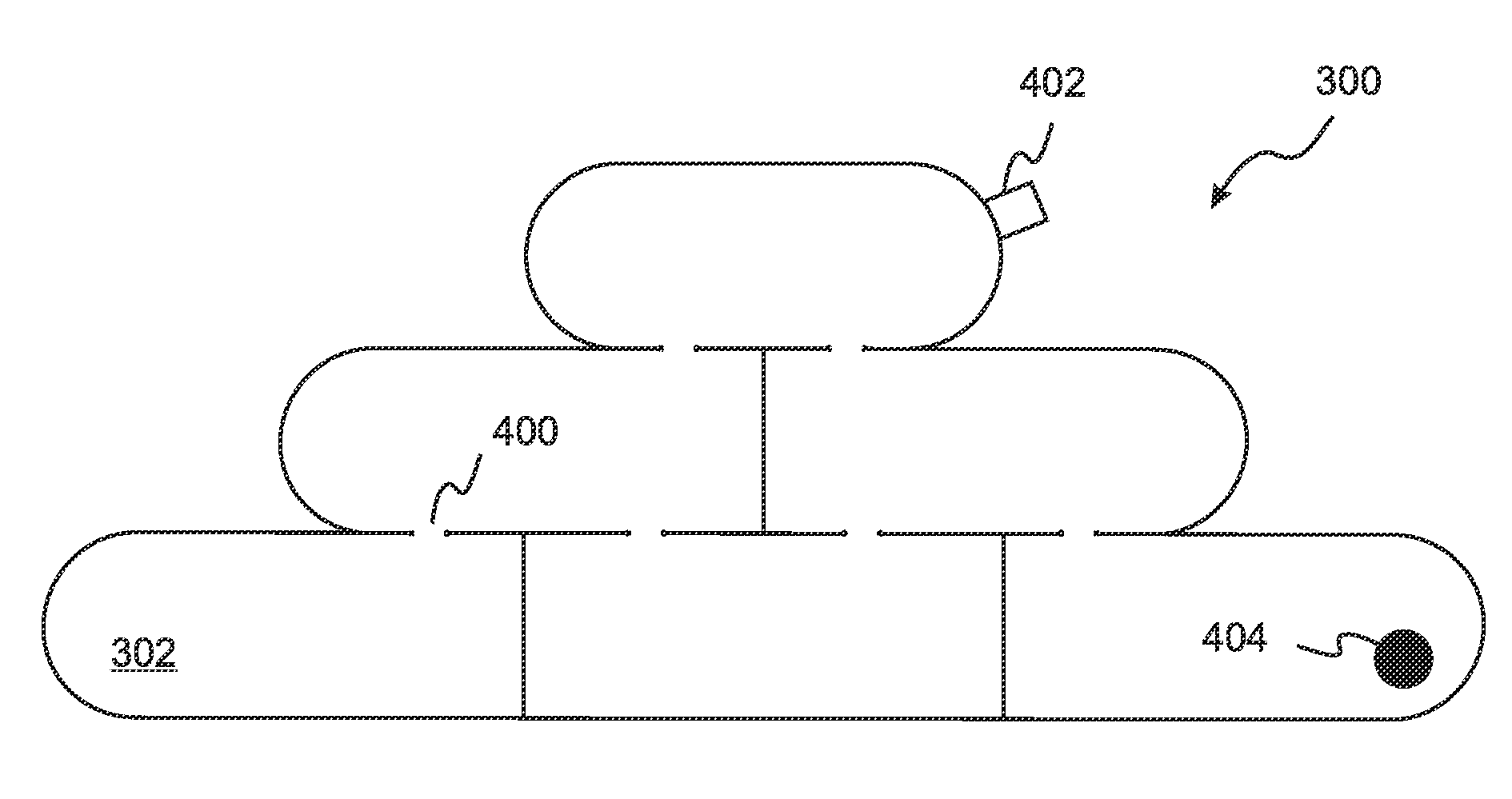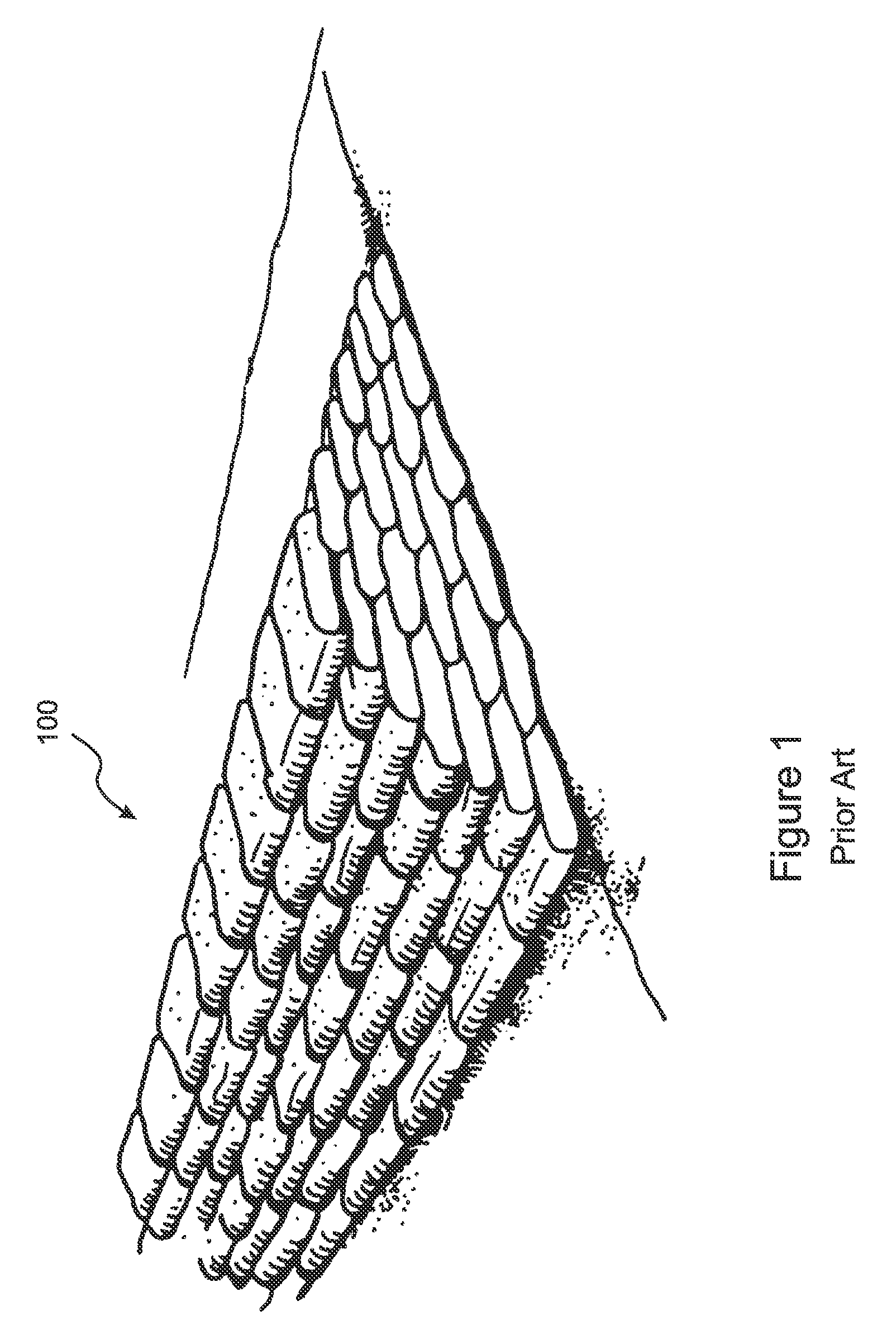Portable water-inflatable barrier
a portable, barrier technology, applied in the direction of dykes, marine site engineering, construction, etc., can solve the problems of time-consuming and costly disposal of sandbags, significant cost and construction time associated with a dike, and achieve the effect of simple and inexpensive removal
- Summary
- Abstract
- Description
- Claims
- Application Information
AI Technical Summary
Benefits of technology
Problems solved by technology
Method used
Image
Examples
Embodiment Construction
[0029]With reference to FIG. 3, the present invention is a portable, water-inflatable barrier 300 that has a structure similar to a sandbag dike or wall 100 and functions in a similar manner, but does not require delivery of large quantities of heavy materials to the construction site, does not require large amounts of labor to assemble, and is simple and inexpensive to remove when no longer needed. The barrier 300 is made of a light, flexible material, such as a heavy plastic for nanofiber, and can be transported to the construction site in a deflated state, after which it is positioned and filled with locally available water. In embodiments, the barrier material is coated with a material such as tyvec or liquid rubber that will tend to seal any puncture of the material that may occur.
[0030]FIG. 3 illustrates an embodiment of a first general aspect of the present invention in which the barrier is a single unit 300 that includes shaping and internal partitions which create an overal...
PUM
 Login to View More
Login to View More Abstract
Description
Claims
Application Information
 Login to View More
Login to View More - R&D
- Intellectual Property
- Life Sciences
- Materials
- Tech Scout
- Unparalleled Data Quality
- Higher Quality Content
- 60% Fewer Hallucinations
Browse by: Latest US Patents, China's latest patents, Technical Efficacy Thesaurus, Application Domain, Technology Topic, Popular Technical Reports.
© 2025 PatSnap. All rights reserved.Legal|Privacy policy|Modern Slavery Act Transparency Statement|Sitemap|About US| Contact US: help@patsnap.com



